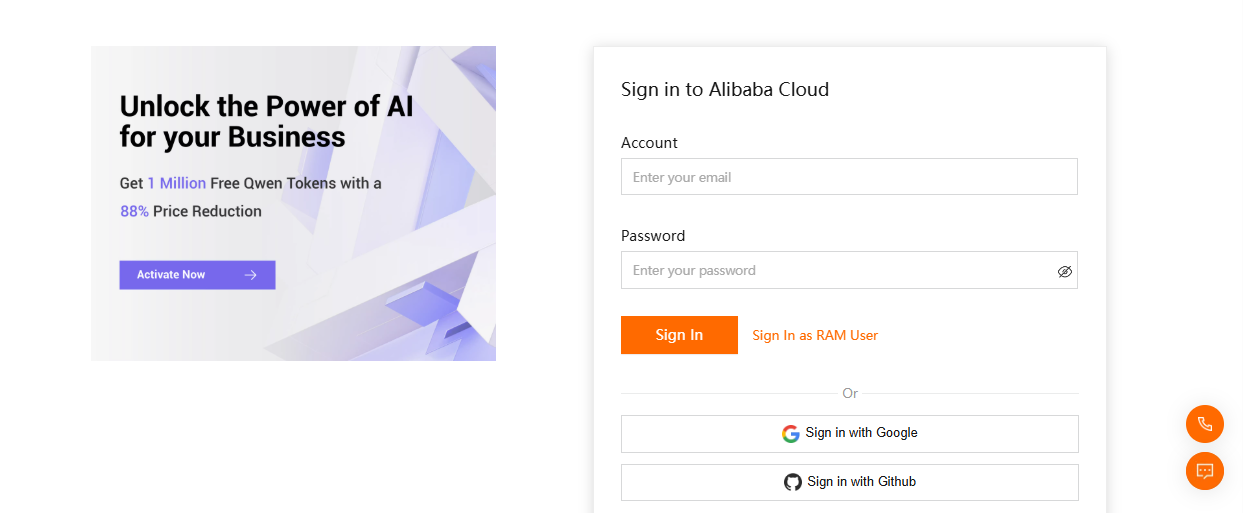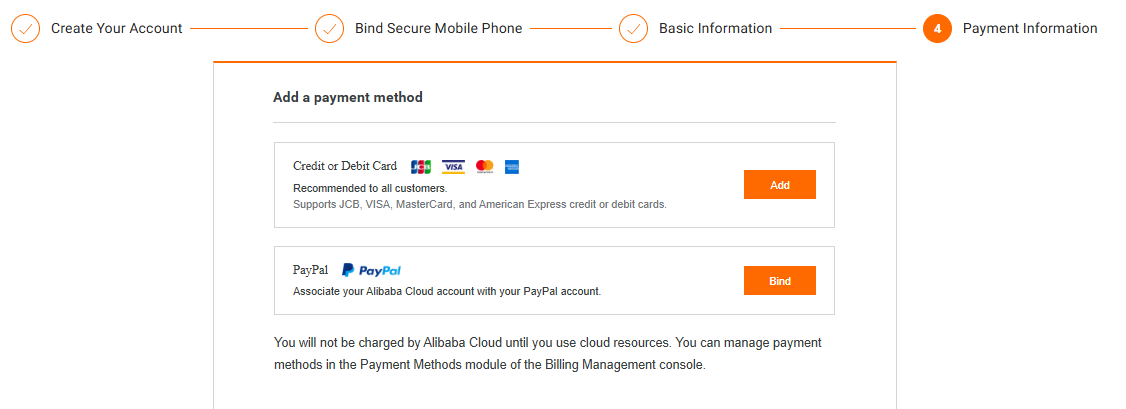Switching to a new cloud provider may seem like a big task, but it doesn’t have to be overwhelming. Moving to Alibaba Cloud brings benefits like improved performance, enhanced security, and cost savings. Plus, you won’t need to worry about downtime or complex migrations. Your team will experience a smooth transition with peace of mind and all the perks.
Alibaba Cloud offers 99.99% availability, backed by advanced infrastructure, ensuring your operations are in safe hands. But how do IT teams handle the shift? In this article, we’ll guide your IT team through every step of the migration process, along with helpful tips to simplify the move, avoid common pitfalls, and maximize your new cloud environment.
Before diving into the steps, it's important to note that Alibaba Cloud offers reliable infrastructure and global data centers, ensuring faster speeds and lower latency. With its pay-as-you-go pricing model, you only pay for what you use, helping you keep costs under control.
Additionally, Alibaba Cloud’s strong security features protect your data from potential threats, and its flexibility allows for easy resource scaling as your business grows. Now that you understand the benefits, here’s how to make your migration hassle-free and successful:
To kick off the migration, review your infrastructure, applications, and dependencies to see what’s cloud-ready and what adjustments are needed. Don’t forget to check if your systems are compatible with Alibaba Cloud’s services. To make your system fit with Alibaba Cloud, confirm that you have:
● Supported operating systems: Windows Server, Linux (CentOS, Ubuntu, Red Hat, etc.)
● Virtualization platforms: VMware, Hyper-V, or KVM environments.
● Network configuration: Stable IP addresses and proper firewall rules for connectivity.
● Storage readiness: Clear data structure with proper backup procedures in place.
● Resource assessment: Accurate CPU and storage requirements for Alibaba Cloud instances.
● Updated software versions: Verify your applications and OS versions work with Alibaba services.
No two migrations are the same. Your approach will depend on your business goals, how complex your current setup is, and how much downtime you can handle. In fact, 42% of cloud migrations take longer than expected due to poor planning. To make things easier, here are the main strategies to consider:
Think of it as the copy-paste method. You move your existing apps, data, and systems to the cloud without changing anything. This strategy is straightforward, perfect for quick transitions or cost-cutting. However, you may miss out on cloud-native benefits like scalability and performance optimization.
Doing this strategy involves moving to the cloud with minor tweaks. For instance, this strategy involves replacing on-premise databases with cloud-managed ones. Plus, it strikes a balance between speed and optimization, making it ideal for businesses aiming for cloud benefits without a full rebuild.
This strategy is a complete overhaul where you redesign apps and infrastructure to leverage cloud-native features fully. It offers scalability and performance gains but requires more time and resources. This is best for businesses aiming for long-term growth and innovation.
Moving to Alibaba Cloud requires proper preparation to prevent unexpected issues later. Setting up your Alibaba Cloud environment is a crucial step before migrating your applications or data. Take time to look at this essential guide to help your team get started:
Head over to Alibaba Cloud and sign up. You’ll need an email, password, and a verification code. After that, verify your identity by adding a phone number or credit card details.

If your account is ready, add your payment method. Go to Billing Management → Payment Methods and link your credit card or PayPal.

Alibaba Cloud offers multiple countries globally. Choose the region closest to your target users. Go to Console → Select Region in the top menu. Pick the region where you want to host your resources.
In the Console, go to ECS → Instances → Create Instance. Choose the region, instance type, and OS (Linux or Windows). Set your instance name and password. Click Create and start the instance.
To control network access, go to ECS → Network and Security → Security Groups. Create a security group and define the rules (allow SSH on port 22 or RDP on port 3389). Attach it to your ECS instance.
If you need storage, navigate to ECS → Disks → Create Disk. Select the instance and disk size. Click Attach to link it to your server. For databases, use RDS (Relational Database Service). Go to RDS → Create Instance.
Select your DB engine (MySQL, SQL Server, or PostgreSQL). Set configurations and create the database.
Download CLI and install it. Run: aliyun configure. Enter your Access Key ID, Secret, and region.
Go to Cloud Monitor → Dashboard. Add metrics like CPU, RAM, and disk usage. Set alerts for unusual spikes.
With your environment ready, it’s time for the heavy lifting. Now, moving everything over may seem overwhelming, but Alibaba Cloud makes it 40% faster with its migration tools. Using these tools not only speeds up the migration but reduces errors, making the whole process less stressful. These tools include:
Server Migration Center (SMC) is a tool designed for large-scale migrations of virtual machines (VMs) and physical servers. With SMC, businesses can transfer workloads to the cloud or data centers without the headaches of compatibility issues. For example, if a company is shifting from on-premises infrastructure to the cloud, SMC ensures that VMs and physical servers are migrated efficiently.
Using Data Transmission Service (DTS) is a reliable tool for transferring databases with continuous replication, ensuring lesser downtime. For instance, if an e-commerce company is migrating its financial reporting software to a new cloud platform, DTS ensures that all data, including financial transactions and critical reports is replicated in real time. That’s why investing in DTS supports various migration scenarios, including:
● Homogeneous migrations (same database type)
● Heterogeneous migrations (different database types)
If you need a fast, secure link between your on-premises data center and Alibaba Cloud. Express Connect bypasses the public internet that boosts reliability. For example, a financial services company can transfer transaction data with minimal delay. Express Connect can cut latency up to 50% compared to standard internet connections, making it perfect for mission-critical workloads.
Once your systems are running on Alibaba Cloud, it’s time to fine-tune performance. Use CloudMonitor to track resource usage and set up alerts for potential issues. Additionally, you can automatically adjust resources based on traffic, keeping costs down by using Auto Scaling. If you're managing a global HRIS system, Alibaba Cloud's distributed architecture ensures your employee data remains accessible and responsive across all international offices.
But if you want to speed things up for global users, use Elastic IPs and the Content Delivery Network (CDN). These reduce delays and improve load times. Keep in mind that optimizing your setup ensures you get the best performance from your cloud environment.
Don’t expect everything to run perfectly after migration. Testing is vital to catch bugs and performance issues. Verify that all applications, services, and databases are working as expected. Run failover tests to confirm your disaster recovery plan works, ensuring quick restoration if anything goes wrong.
Here’s an example failover test table:
| Test Scenario | Expect Outcome | Actual Outcome | Status | Notes |
|---|---|---|---|---|
| Database Failover | Backup database activates instantly | Backup activated in 5 seconds | Pass | Slight delay, but stable |
| App Server Failure | Traffic redirected to backup server | Traffic redirected successfully | Pass | No downtime detected |
| Data Integrity Check | All data is accurate after failover | Minor data delay detected | Partial | Sync issue during failover |
| Network Outage | Auto-recovery within 1 minute | Recovery took 45 seconds | Pass | Within acceptable time |
| Load Balancer Test | Balancer redirects load evenly | Even distribution confirmed | Pass | No performance issues |
Getting the hang of Alibaba Cloud takes practice. Make sure your IT team is well-versed in managing the new environment. Alibaba Cloud offers detailed documentation and training to help your team get familiar with the platform. Plus, ongoing monitoring is vital, so use security and monitoring tools, like:
● CloudMonitor: Tracks performance metrics and sends alerts if anything goes wrong.
● ActionTrail: Records all activities and API operations, helping you audit for suspicious behavior.
● Security Center: Scans for vulnerabilities and provides real-time threat detection.
● Anti-DdoS: Protects your systems from Distributed Denial-of-Service (DDoS) attacks.
● Log Service: Collects and analyzes logs, making it easier to track errors and troubleshoot issues.
Switching to Alibaba Cloud may feel like a big step, but with the right approach, your IT team can ensure a smooth transition. Start by assessing your current setup, selecting the best migration strategy, and using Alibaba Cloud’s tools to streamline the process. For businesses leveraging b2b sales tools, Alibaba Cloud's enhanced performance and reliability can significantly improve your sales infrastructure capabilities and customer relationship management.
Once everything is set up, remember to optimize performance, test for issues, and monitor security. With a reliable cloud environment like Alibaba, your business will be ready to scale, enhance performance, and save on costs.
https://www.alibabacloud.com/en/solutions/cloud-migration?_p_lc=1
https://www.linkedin.com/pulse/your-roadmap-alibaba-cloud-migration-step-by-step-guide-kluttz-%E7%94%B0%E9%A6%A8%E7%BA%AC-6nfxc/
https://www.alibabacloud.com/blog/lift-and-shift-moving-vms-to-alibaba-cloud-with-server-migration-center-smc---friday-blog-week-45_598531#:~:text=Setting%20Up%20A%20VM,up%20and%20working%20after%20migration).
https://www.artisan.co/blog/b2b-sales-tools
https://alibaba-cloud.medium.com/alibaba-cloud-migration-tool-server-migration-center-e22f7207103c
https://www.alibabacloud.com/en/getting-started/projects?_p_lc=1
https://dev.to/cloudtech/journey-into-alibaba-cloud-a-beginner-s-guide-3dki
Disclaimer: The views expressed herein are for reference only and don't necessarily represent the official views of Alibaba Cloud.
The Hidden Costs of Data Breaches: Protecting Your Business in the Cloud Era
Secure Your Business with Alibaba Cloud’s Asia Data Compliance
Alibaba Clouder - September 7, 2020
Alibaba Cloud Community - February 8, 2022
Alibaba Clouder - June 10, 2020
Alibaba Cloud Community - September 2, 2025
Neel_Shah - June 24, 2025
francisndungu - August 24, 2019
 CloudBox
CloudBox
Fully managed, locally deployed Alibaba Cloud infrastructure and services with consistent user experience and management APIs with Alibaba Cloud public cloud.
Learn More IT Services Solution
IT Services Solution
Alibaba Cloud helps you create better IT services and add more business value for your customers with our extensive portfolio of cloud computing products and services.
Learn More Enterprise IT Governance Solution
Enterprise IT Governance Solution
Alibaba Cloud‘s Enterprise IT Governance solution helps you govern your cloud IT resources based on a unified framework.
Learn More Function Compute
Function Compute
Alibaba Cloud Function Compute is a fully-managed event-driven compute service. It allows you to focus on writing and uploading code without the need to manage infrastructure such as servers.
Learn MoreMore Posts by Ali Ali